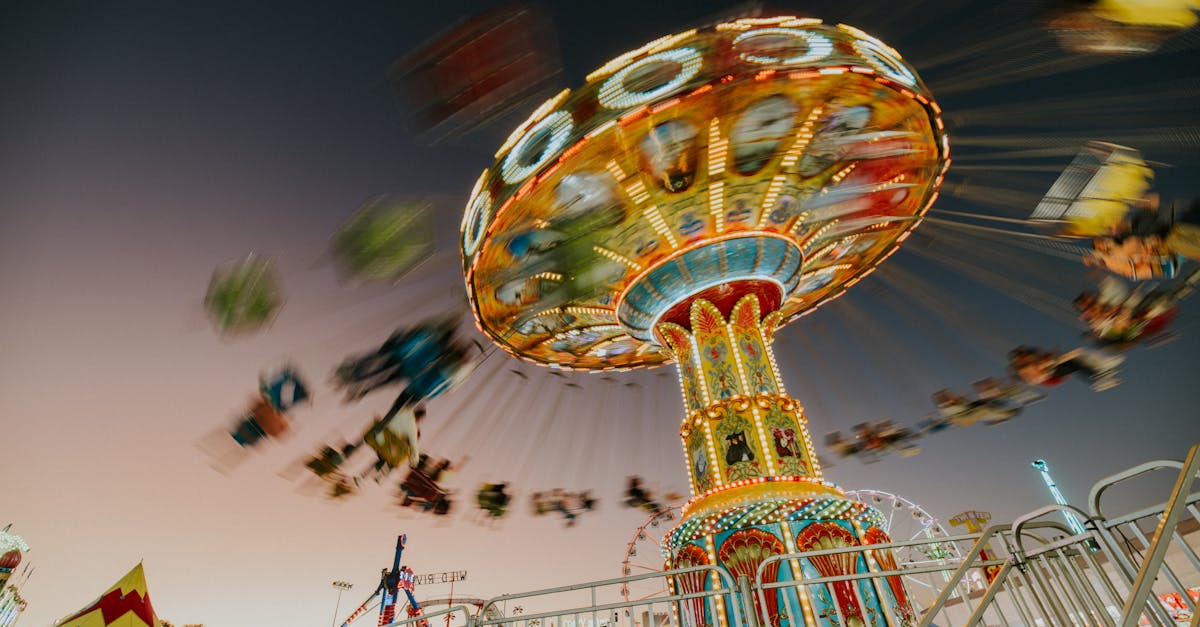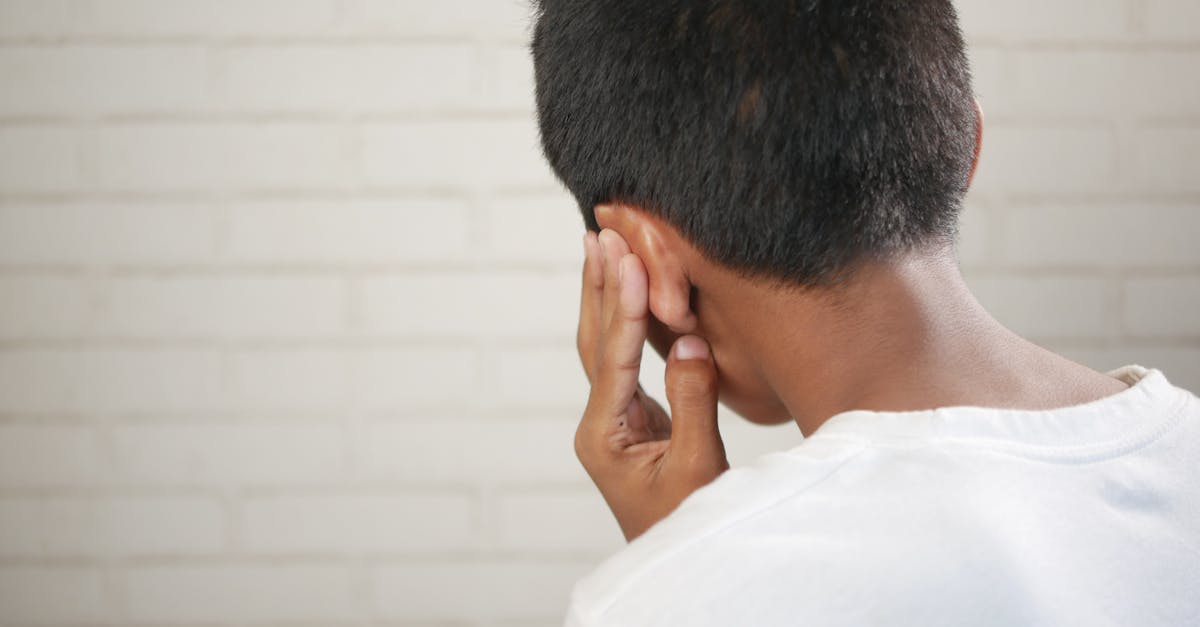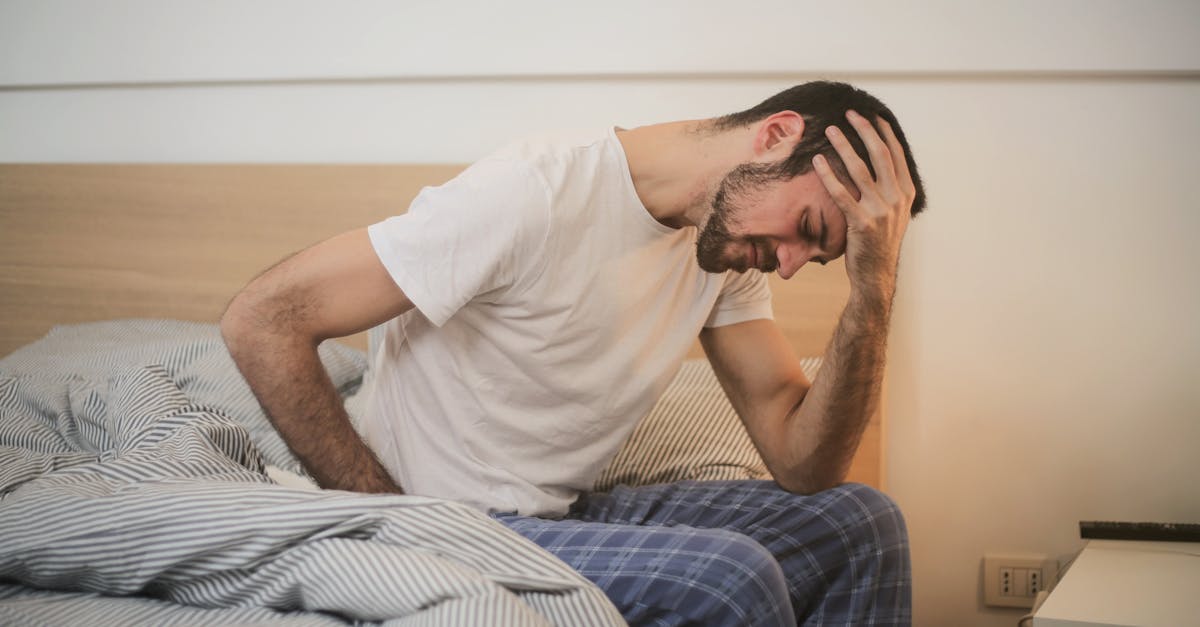Dizziness after a head injury affecting your daily life?
In Short: Dizziness after head injury can disrupt your daily activities, but personalized strategies for vertigo treatment are within reach. Explore how Pulse Align’s gentle approach targets balance problems caused by conditions like BPPV, vestibular neuritis, or labyrinthitis. Our methods promote natural recovery and improve your overall well-being, allowing you to move with enhanced stability and reduced discomfort. Reclaim your health and wellness at Pulse Align Clinics. Book your appointment today!
Are you struggling with lower back pain and poor posture?
Regaining balance after a head injury: Pulse Align’s mindful strategy for managing dizziness has been proven effective for many individuals. Studies show that vertigo significantly affects daily activities, with conditions such as BPPV (benign paroxysmal positional vertigo) and vestibular neuritis being common dizziness causes. By focusing on posture correction and core strengthening, Pulse Align empowers clients to address these balance problems, reducing the discomfort associated with dizziness and anxiety. Discover how this gentle approach can lead you toward reclaiming your health and stability.

Regain Your Balance with Pulse Align: A Gentle Approach for Optimal Well-Being
Experiencing dizziness or balance issues after a head injury can disrupt daily life, leaving one feeling unsteady and uncomfortable. At Pulse Align, we embrace a mindful strategy that highlights posture improvement and neuromuscular recalibration, helping clients restore their sense of stability and well-being naturally.
Understanding the Importance of Balance and Posture
Maintaining a solid foundation of balance and posture is essential for overall health. Many individuals may face challenges associated with muscle tone and alignment, which can lead to a sense of imbalance or discomfort. At Pulse Align, we utilize gentle stimulation techniques aimed at promoting muscle tone symmetry, encouraging the body to regain its natural balance without the need for invasive interventions.
The Holistic Benefits of Pulse Align
Pursuing holistic wellness involves tapping into the body’s innate ability to heal. Pulse Align’s approach focuses on encouraging this natural healing process, allowing clients to experience improved function and greater ease in their movements. The integration of posture correction and core strengthening plays a significant role in our methodology, ensuring that clients receive a well-rounded experience designed to enhance their overall well-being.
Client Experiences Speak Volumes
Our clients often share transformative stories of personal growth and achievement after incorporating Pulse Align into their wellness routines. Those who sought to improve posture naturally and reduce discomfort reported feeling more empowered and confident in their daily activities. Many have expressed gratitude for our gentle techniques, which have made a positive impact on their well-being.
Take the Next Step Towards Wellness
If you’re ready to reclaim your balance and enhance your life quality, consider booking a consultation with Pulse Align. Our welcoming environment and expert care are designed for the whole family, including children and pregnant women. With locations in Montreal, La Prairie, Terrebonne, Chicoutimi, Charlesbourg, Saint-Jérôme, Châteauguay, Sainte-Marie, Les Escoumins, Granby, and Panama City, finding a nearby clinic is easy. Remember, Pulse Align complements your existing healthcare journey while supporting your wellness aspirations. Explore the Pulse Align difference today and book your consultation!
Medical Disclaimer: Pulse Align complements but does not replace medical care. It is recommended that clients remain under the supervision of their healthcare team for any medical conditions. The positive changes reported by clients are a result of the body’s natural ability to restore balance.
- Posture Correction: Enhances body alignment for improved stability and reduced dizziness.
- Core Strengthening: Fortifies trunk muscles, promoting better balance and posture.
- Gentle Techniques: Non-invasive methods designed to alleviate discomfort during recovery.
- Neuromuscular Recalibration: Restores connections between the brain and body to enhance coordination.
- Personalized Programs: Tailored recovery plans that cater to individual needs and challenges.
- Holistic Approach: Integrates emotional and physical wellness for comprehensive care.
- Regular Follow-ups: Continuous assessments to track progress and adjust treatment plans accordingly.
- Client-Centered Care: Focuses on unique experiences and needs of each individual.

Experiencing dizziness following a head injury can be a disorienting challenge, often accompanied by anxiety and an overarching concern about balance problems. At Pulse Align, we adopt a mindful strategy for managing vertigo that emphasizes the importance of neuromuscular health, posture improvement, and holistic recalibration. Our goal is to empower individuals to reclaim their stability through a combination of targeted vertigo treatment and personalized care.
Understanding Dizziness After Head Injury
A variety of dizziness causes may surface after a head injury, including conditions such as BPPV (benign paroxysmal positional vertigo), vestibular neuritis, and labyrinthitis. Each of these conditions can lead to significant disruptions in daily activities, creating frustration and increased dizziness and anxiety. By addressing these issues holistically, clients can effectively regain their balance and improve their quality of life.
The Role of Postural Correction
Proper posture correction is essential to alleviating symptoms of dizziness. As we focus on enhancing muscle tone symmetry, we encourage our clients to engage in activities that promote proper alignment. This includes targeted exercises that reinforce a stable base, reducing incidents of dizziness when standing up suddenly. For instance, incorporating core strengthening techniques not only supports stability but also contributes to overall balance.
Core Strengthening Techniques
To further promote recovery, Pulse Align recommends specific trunk exercises designed for individuals experiencing dizziness post head injury. Engaging in structured BPPV exercises at home can significantly lessen vertigo symptoms. Such exercises focus on enhancing core strength, allowing the body to better manage its balance. Progressions can be introduced to adapt to each individual’s fitness level, ensuring continued improvement.
Natural Solutions for Dizziness Relief
In addition to structured exercises, several dizziness home remedies can complement the journey to recovery. Simple lifestyle shifts, such as maintaining proper hydration and incorporating natural remedies for dizziness and nausea, can optimize wellness. Employing safe movements to stimulate the vestibular system is another effective method to manage symptoms and restore natural balance.
Holistic Recalibration Through Mindful Practice
Pulse Align’s holistic approach integrates both physical and emotional wellness, emphasizing the power of nervous system recalibration. This aspect is crucial for clients recovering from the impacts of various conditions, including Meniere’s disease, as it helps to restore the body’s inherent abilities. Regular follow-ups ensure that the recovery plan remains aligned with each client’s needs and progress.
Call to Action
If you or a loved one are struggling with dizziness after a head injury, we invite you to explore the expert services offered at Pulse Align. Our personalized exercise plans, coupled with innovative therapies, can help you regain your health and wellness. Book your consultation today and embark on a journey towards enhanced stability and comfort at our clinics, conveniently located in cities like Montreal, La Prairie, and Panama City.
Comparison of Strategies for Regaining Balance After a Head Injury
| Strategy | Description |
|---|---|
| Posture Correction | Enhances body alignment to reduce dizziness and improve stability. |
| Core Strengthening | Strengthens trunk muscles, supporting better posture during recovery. |
| Gentle Techniques | Utilizes non-invasive methods to alleviate discomfort while promoting healing. |
| Neuromuscular Recalibration | Re-establishes communication between brain and body for optimal balance. |
| Personalized Programs | Tailored recovery plans to address individual symptoms and needs. |
| Regular Follow-ups | Ensures continuous assessment and adjustment of treatment plans. |
| Holistic Approach | Integrates both physical and emotional wellness into recovery strategies. |

The Wellness Journey Towards Balance: Client Testimonials
“After my head injury, I was overwhelmed by persistent dizziness and imbalance. Discovering Pulse Align’s mindful strategy allowed me to restore my natural balance in a way that felt supportive and nurturing. Their unique approach helped me tap into my body’s innate ability to recalibrate itself. I can now enjoy activities I once avoided. The compassionate care I received truly transformed my life.” – Client from Mont-Royal
“Living in Terrebonne, I sought solutions for my dizziness after experiencing a head injury. Although I was initially hesitant, Pulse Align’s gentle techniques have remarkably improved my well-being. I appreciate how they emphasize the body’s resilience, allowing me to navigate life with newfound confidence and comfort. The transformations I’ve experienced are not just physical but emotional too.” – Client from Terrebonne
“As a resident of Chicoutimi, I struggled with dizziness that left me feeling disoriented. Pulse Align’s holistic recovery approach has proven to be a game-changer for me. Their focus on activating the body’s natural recovery processes made all the difference. I feel more grounded and balanced than I ever thought possible, and I have regained my sense of independence.” – Client from Chicoutimi
“In Châteauguay, the unique methods at Pulse Align have made a significant impact on my health after my injury. They’ve provided a calm environment that encourages wellness while working alongside my existing healthcare team. The team helped me re-engage in my daily life with less apprehension, and I am genuinely grateful for their support.” – Client from Châteauguay
“I found Pulse Align through referrals from friends in Les Escoumins who had similar experiences. Their gentle recalibration strategies eased my dizziness and improved my overall health remarkably. I now feel empowered to participate fully in life again. This clinic is a vital resource for anyone looking to reclaim their balance and well-being.” – Client from Les Escoumins
“For those situated in Saint-Jérôme, I cannot recommend Pulse Align highly enough. Their approach to dizziness recovery, emphasizing the body’s inherent capabilities, has vastly improved my symptoms. I feel centered and supported as I continue my wellness journey.” – Client from Saint-Jérôme
Discover how you too can benefit from Pulse Align’s unique methods. With locations available in regions such as La Prairie, Mont-Royal, and Panama City, it’s easier than ever to access the support you need. Visit Our Clinics to find a nearby location and begin your wellness journey today!
Experiencing dizziness after a head injury can be a daunting challenge that affects daily life. Many individuals seek to regain their balance and well-being without embarking on complicated treatment paths. At Pulse Align, we are dedicated to facilitating posture improvement and functional stability through our gentle approach to neuromuscular recalibration.
Understanding the Importance of Posture and Balance The way our bodies are positioned and aligned can profoundly impact how we feel and function. At Pulse Align, we emphasize the importance of restoring muscle tone symmetry and natural balance. Our gentle stimulation techniques encourage the body to recalibrate and support its natural healing processes. By promoting effective posture correction, we aim to enhance overall well-being, allowing clients to move with greater ease and confidence.
Holistic Benefits of Pulse Align Our clients often share inspiring stories of transformation, highlighting how our holistic approach made a difference in their lives. Clients have reported feeling more grounded and balanced, experiencing reductions in tension and discomfort. The focus at Pulse Align is on improving posture naturally and supporting the body’s inherent capabilities to restore harmony. This results in an overall sense of well-being that empowers clients to engage fully in their daily activities.
Client-Centered Experiences Many clients within our community have found significant relief through their experiences with Pulse Align. For instance, clients have noted improvements in their daily routines, stating how they could engage in activities they once avoided due to fear of unsteadiness. These individual success stories underline our commitment to personalized care and the effectiveness of our gentle techniques. We’re here to support each client’s journey toward enhanced stability and comfort.
Finding Stability After Head Injury Pulse Align’s gentle approach to dizziness offers a targeted solution for individuals grappling with symptoms of dizziness and vertigo after a head injury. Our innovative strategies promote natural balance restoration, enabling clients to experience improved stability and less discomfort. This effective treatment aims to support recovery and improve overall well-being.
Our Mission
At Pulse Align, our mission is to deliver evidence-based, client-centered treatments that address the underlying causes of pain and dysfunction. By integrating advanced techniques and technologies, we strive to empower each person to take control of their health, ensuring a high standard of care, lasting relief, and an improved quality of life.
Explore our innovative services at www.pulsealign.com and find a location near you here: https://pulsealign.com/our-locations/.
Enhance Your Recovery with TAGMED’s Neurovertebral Decompression Therapy
TAGMED’s advanced Spinal Decompression Therapy is a non-surgical solution meticulously designed to address moderate-to-severe disc issues. This innovative approach targets conditions such as herniated discs, bulging discs, and spinal stenosis. By gently reducing pressure on affected discs and nerves, this specialized technique not only helps enhance mobility but also alleviates pain and supports your body’s natural healing process. If you’ve reached a plateau with other therapies, discover how TAGMED’s evidence-based decompression approach can help you resume an active, comfortable life.
Have you tried conventional treatments and still struggle with persistent back pain due to a severe disc condition?
Mechanism of Action
TAGMED’s neurovertebral decompression employs a controlled, progressive traction force that applies therapeutic tension to the spine. This method effectively increases the space between vertebrae, thereby reducing pressure on intervertebral discs and nerve roots. The result is an improvement in fluid circulation in the targeted area, which helps lower inflammation and relieve pain. This reliable, non-invasive solution effectively addresses chronic back issues.
Specific Benefits
The non-invasive nature of TAGMED’s approach effectively alleviates chronic pain and symptoms associated with conditions like herniated discs or spinal stenosis. By reducing pressure on nerve structures and optimizing fluid circulation around the discs, this therapy can significantly speed up recovery and enhance the quality of life for a diverse range of patients. Experience how this method helps individuals regain control over their physical well-being.
Comparison with Other Treatments
When compared to other commonly utilized therapies such as pain medications, corticosteroid injections, or surgical interventions, TAGMED’s neurovertebral decompression distinctly stands out. It minimizes medication-related risks and avoids invasive procedures while providing a potentially faster path to recovery. Patients seeking safe, evidence-based alternatives can find this technology compelling, as its efficacy supports a holistic approach to chronic pain relief.
Case Studies or Testimonials
Numerous patients have reported remarkable improvements following TAGMED’s neurovertebral decompression therapy. Testimonials illustrate lasting pain relief, quicker resumption of daily activities, and a reduced reliance on pharmaceuticals. These real-world examples highlight the tangible results and practical advantages that this therapeutic approach delivers, assuring individuals that they are making a well-informed decision for their health.
Conclusion: Embracing Wellness with Pulse Align
Regaining balance after a head injury is a journey that can be navigated successfully with the mindful strategies offered by Pulse Align. Our holistic health approach is designed to gently support your body’s natural healing abilities, making it easier for individuals to experience improvements in essential areas such as posture correction, reduced discomfort, increased mobility, and enhanced overall well-being.
Clients consistently share their positive experiences with Pulse Align, highlighting how our gentle, non-invasive methods have helped them feel more grounded and stable. They appreciate the attention to their unique needs and the focus on nurturing a healthier lifestyle through neuromuscular recalibration. The transformative effects of our services encourage many to engage in daily activities with newfound confidence.
If you’re ready to take charge of your wellness journey, discover the Pulse Align difference today. By scheduling a consultation, you can explore how our services can facilitate your journey toward a healthier, more balanced life. Your path to achieving optimal wellness starts with a simple step—visit our website to learn more and book an appointment today!

Do you suffer from a chronic condition that responds little or not at all to conservative treatments?
Pulse Align is proud to offer a non-invasive, innovative approach designed to help restore the body’s natural balance and posture. Through gentle, imperceptible pulses, our methods aim to support the recalibration of muscle tone and promote overall well-being. This holistic strategy can lead to noticeable reductions in muscle and joint tension, effectively addressing feelings of discomfort associated with everyday life.
At Pulse Align, we believe in the body’s inherent capability to restore itself. Rather than focusing on specific discomforts or conditions, our services concentrate on enhancing your overall harmony within. This gentle implementation often results in remarkable improvements in comfort and improved posture, fostering a renewed sense of stability.
We embrace a personalized approach at Pulse Align, striving to adapt our services to meet each client’s unique needs. Many of our clients frequently share positive experiences, noting how they have experienced significant improvements in their comfort levels, feelings of tension, and overall wellness. The supportive environment at Pulse Align ensures that every individual can embark on their journey toward enhanced balance and well-being.
To learn more about our offerings, we invite you to visit the Pulse Align website. Here, you can explore nearby locations, including La Prairie, Mont-Royal, Terrebonne, and more. We encourage you to book a consultation for yourself or your family, ensuring your wellness journey is complemented by our gentle methods. It is important to remember that Pulse Align complements existing healthcare services, providing a supportive framework as you seek to enhance your well-being.
Frequently Asked Questions
Vértigo
¿La respiración profunda ayuda a calmar un vértigo?
Una respiración lenta y profunda puede reducir la ansiedad y ayudar a manejar la sensación de vértigo.
Les médicaments peuvent-ils soulager les vertiges ?
Certains médicaments (anti-vertigineux, antiémétiques) peuvent aider, mais c’est le traitement de la cause qui est essentiel.
Les transports peuvent-ils déclencher des vertiges ?
Le mal des transports est un trouble de l’équilibre causé par des signaux sensoriels contradictoires, pouvant provoquer vertiges et nausées.
¿Levantarse demasiado rápido provoca vértigos?
Sí, al levantarse rápido puede haber hipotensión ortostática, causando mareos, aunque no siempre verdadero vértigo.
¿Las infecciones del oído pueden provocar vértigo?
Sí, una infección o inflamación del oído interno (neuritis vestibular) puede causar vértigo súbito e intenso.
Le changement de position trop rapide provoque-t-il des vertiges ?
Oui, se lever brusquement peut causer une baisse de la pression artérielle (hypotension orthostatique) et des étourdissements.
Les troubles de l’équilibre et les vertiges sont-ils liés ?
Oui, les vertiges sont l’une des principales causes de troubles de l’équilibre, mais pas la seule.
Can diabetes cause vertigo?
Low blood sugar can cause dizziness, but that’s not true vertigo.
¿Una pérdida auditiva repentina con vértigos es grave?
Puede indicar un problema del oído interno, como la enfermedad de Ménière o laberintitis. Se necesita consulta médica.
La rééducation vestibulaire prend-elle longtemps ?
Cela dépend de la cause et de la gravité. Quelques semaines à plusieurs mois sont parfois nécessaires pour une amélioration significative.
Zoé Rousseau believes that knowledge is the most powerful step toward healing—and she’s here to illuminate the path forward for anyone facing the challenges of vertigo. At Pulse Align, Zoé not only highlights the latest breakthroughs in neuromodulation and non-invasive health technologies but also translates complex research into practical, everyday guidance. Her approach is grounded in empathy and fueled by a genuine drive to help readers find balance, both literally and figuratively. From exploring advanced treatments to sharing firsthand patient stories, Zoé’s heartfelt advocacy ensures that no one has to face the spinning world of vertigo alone.
Medical Disclaimer
The information and advice provided on this site do not replace the advice, diagnosis, or treatment of a healthcare professional. Please note that the author of this article is neither a doctor nor a specialist in a medical specialty as defined by the Collège des médecins du Québec. Manual medicine, functional medicine, and sports medicine as described on this site exclude any medical treatment or diagnosis made by a doctor or medical specialist. Always consult your doctor for any medical questions. For more details, please read our complete Legal Notice.


